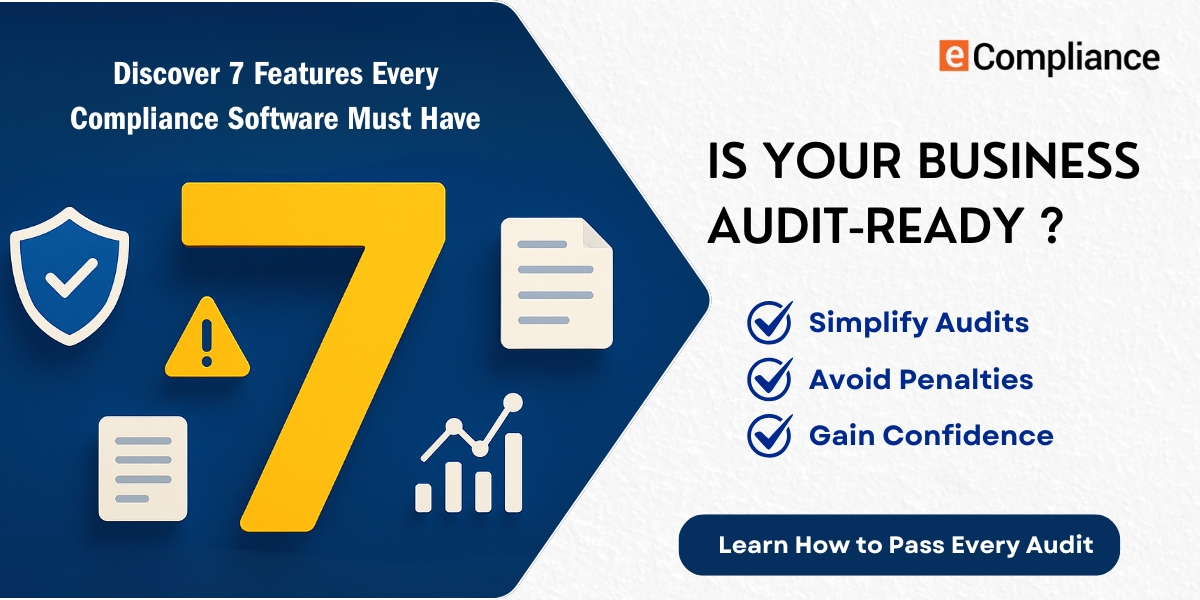There is nothing that can compete with the anxiety of sudden audits. Actually, it’s a last-minute jostling through frantic searches of documentation followed with sleepless nights wondering what might have been missed. Most organizations’ audits still continue to have the feeling of a reactive event – chaotic and costly. But it shouldn’t be so. With the right Audit & Compliance Software, you can turn audit-stress into confidence. What’s the secret? Knowing which features truly mean something.
If you’re polishing your current audit management system or perusing the internal audit software that’s out there, here are the seven indispensable functions top performers turn to when they want to be ready for inspection. AI is the effective solution for growing up audit anxiety and you need to revolutionize audit stress into audit confidence. The secret is: recognizing what features really matter. Whether improving the current audit management system or looking for newly established internal audit software, here are the seven must-have features of high-performing organizations to keep hibernating for the inspection.
1. Centralized Document Repository
Having all audit-related documents — policies, procedures, reports, and evidence — stored in one secure, searchable location is essential. A centralized repository not only eliminates version confusion but also ensures instant access during inspections.
2. Automated Workflow & Task Assignment
Since everything is done manually, there is a possibility of errors creeping in. An audit management system should automate task assignment and deadline scheduling for all tasks that have been assigned so that it can follow up with the concerned parties. This way, people are held accountable, and nothing can really slip through the cracks.
3. Real-Time Dashboards & Reporting
If you can’t see it, you can’t manage it. You should be able to see the current position of audits, findings, and corrective actions with real-time dashboards. By this, you will be able to prevent-the-issues just before start to arise-reactive-the-reaction.
4. Issue & Corrective Action Tracking
No audit is perfect. But how you respond to findings makes all the difference. A robust internal audit software should allow you to log issues, assign corrective actions, track progress, and validate resolution — all in one place.
5. Risk-Based Audit Planning
Risks are not all the same. Audits should be prioritized by your software according to previous occurrences, compliance requirements, or risk severity. Resources are directed where they are most needed thanks to this.
6. Regulatory & Standards Mapping
Whether you follow ISO, SOX, HIPAA, or other standards, your audit & compliance software should align audits with the relevant frameworks. This simplifies reporting and strengthens regulatory compliance.
7. Audit Trail & Historical Records
Regulators often want to see not just what you’re doing now, but what you’ve done in the past. An unalterable audit trail that records all actions and changes is non-negotiable for transparency and accountability.
Final Thoughts: Don’t Just Be Ready — Be Confident
Inspecting and auditing is a certainty; organizational success or failure depends on preparation for these events. It’s a matter not of ticking boxes in searching for the right audits or compliance applications, but rather empowering your teams with tools that allow them to have visibility, consistency, and control over their work.
If your present system does not have any one of those seven features, maybe it’s time to think of other solutions. Talk to us and we will show you how our top-of-the-line audit management system helps make inspection readiness a default rather than an emergency exercise.
FAQs
- What is audit and compliance software?
A platform intended to facilitate and automate audit, planning, execution, documentation, and tracking of compliance across an organization.
- Efficiency improvement through internal audit software:
Internal audit software cuts man-hours needed for audits and thus shortens audit times, thanks to automation, real-time visibility, and centralized records.
- Audit software customizable to other regulatory standards?
Mapping to standards such as ISO, SOX, or even HIPAA would be available in most enterprise-level solutions, allowing compliance to be organized and reported.
